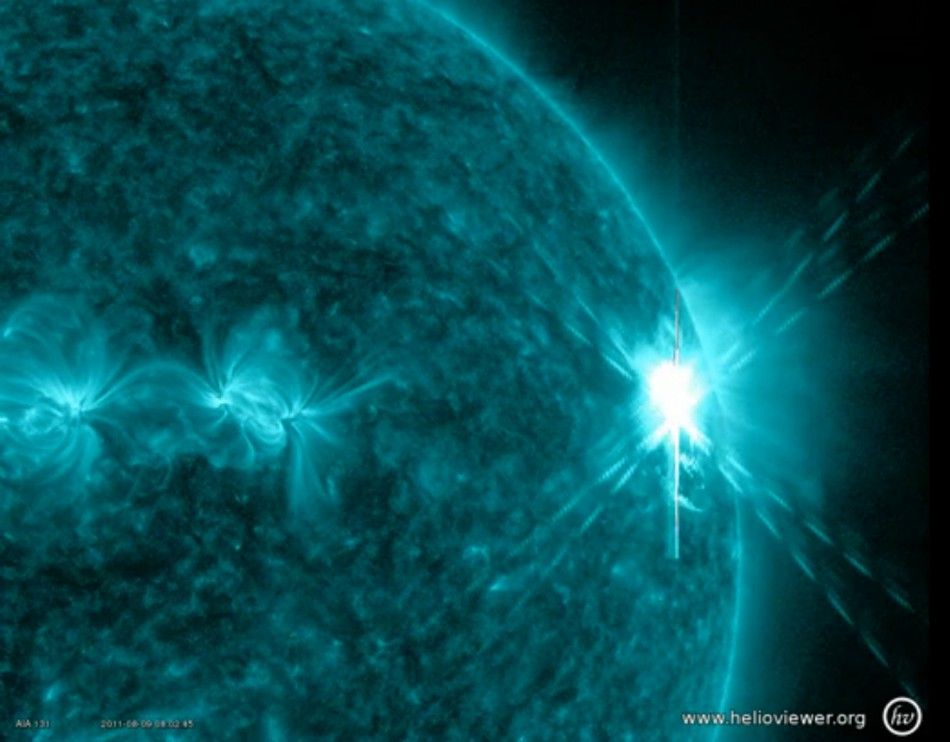Sun Emits Powerful Solar Flare, Little Impact Expected on Earth [VIDEO]
The sun emitted a powerful solar flare on Tuesday, which is the largest in five years, but the bursts of radiation weren't in the direction of Earth and so there will be little impact on satellite and communication systems, scientists say.
"It was a big flare," said Joe Kunches, a space scientist with the National Oceanic and Atmospheric Administration (NOAA)'s Space Weather Prediction Center. "We lucked out because the site of the eruption at the sun was not facing the Earth, so we will probably feel no ill effects."
Tuesday's solar flare began around 3:48 a.m. EDT and was classified as an X6.9 flare, as measured by the NOAA GOES satellite, NASA said.
These massive bursts of radiation cannot pass through Earth's atmosphere to harm humans on the ground, but they can disrupt the atmosphere and disrupt GPS and communications signals. In this case, the flare packed a punch strong enough to potentially cause some radio communication blackouts, NASA said.
Kunches told The Associated Press that there were reports of brief short-wave radio disruptions in Asia, but little else.
The sun is transitioning from a quiet period into a busier cycle and solar flares like the one erupted on Tuesday will become more common as the sun nears its maximum level of activity in 2013, scientists say.
The last time there was such a strong solar flare was in December 2006.



© Copyright IBTimes 2024. All rights reserved.












